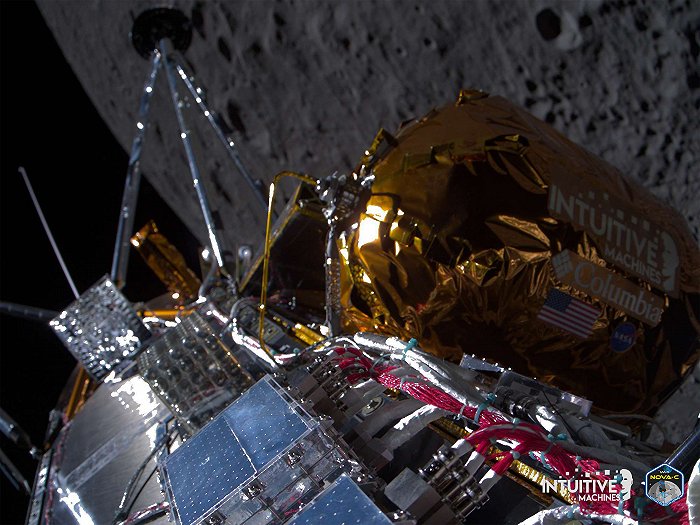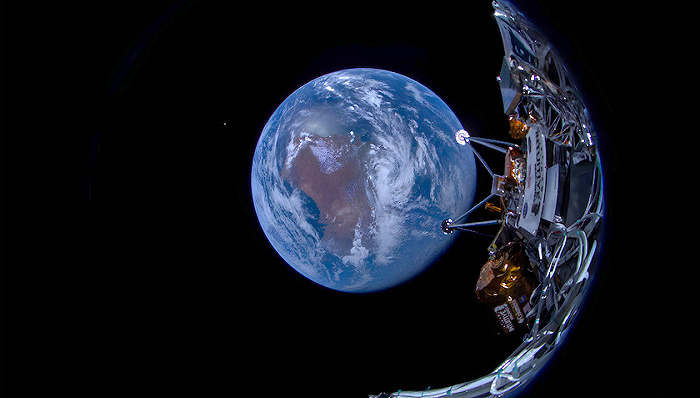At around 5:30 pm Eastern Time on February 22, 2024 (6:30 am Beijing Time on February 23), Intuitive Machines’ lunar lander will attempt to land at the South Pole of the Moon.

If successful, this will be the first trade spacecraft to soft land on the moon, and also the first time a spacecraft from the United States has set foot on the moon in over 50 years. So far, only the United States, the Soviet Union (Russia), China, India, and Japan, as well as the European Space Agency, have the ability to understand the appearance of landing on the moon, and no private company has yet achieved this feat.
The lander developed by Intuitive Machinery Company is called Odysseus, which took off on February 15th aboard SpaceX’s Falcon 9 rocket.
Stop publishing. According to the latest news from NASA, Odysseus has successfully joined the lunar route and is currently orbiting the moon at a distance of 60 miles (approximately 92 kilometers) from its appearance. The plan is to land around 5:30 pm on February 22nd. NASA TV will start broadcasting the landing attempt live from 4pm on the 22nd.
On February 21st, Intuitive Machinery Company shared photos taken by Odysseus as he flew over the near side of the moon after joining the lunar route on social media.
Odysseus flew over the near side of the moon.
This is one of the attempts made by a private company to plan NASA’s manned return to the moon as Artemis. In order to increase costs and fully utilize the advantages of private spaceflight, NASA has outsourced the related mission of the lunar lander to a trading space company.
NASA has signed outsourcing missions with multiple private American companies so far, with a total value of $2.6 billion by 2028. Intuitive Machinery Company is one of NASA’s subcontractors. NASA paid $118 million for the Odysseus landing mission.
Odysseus’s landing destination was a flat area outside a crater called Malapert A, approximately 185 miles away from the south pole of the moon. This is also one of the several landing sites selected by NASA’s manned program. The successful release of Odysseus will have a significant impact on NASA’s subsequent lunar landing plans.
Living charcoal has been discovered near the South Pole of the Moon, which is neither used for life support nor processed into rocket fuel to provide energy for more space exploration missions. At present, lunar landing plans in multiple countries are all aimed at this location. More than 50 years ago, the Apollo lunar landing plan in the United States was to land near the lunar equator, which is less difficult to disembark from.
However, landing at the South Pole of the Moon is more difficult. Last month, Astrobotic, another subcontractor of NASA, stopped attempting, but its Peregrine Falcon lander experienced engine failure a few hours after launch, causing fuel leakage and ultimately failing its mission. The company plans to try landing again as early as this year.
Odysseus has gone further than the falcon. However, it was not the first private spacecraft to join the lunar route. Previously, private landers from Israel and Japan successfully flew around the moon, but crashed while attempting to land.
As for Odysseus landing, it is a hexagonal cylinder, 4 meters high and about 1.5 meters wide, with 6 landing legs, which may transport a payload of 100 kilograms to the surface of the moon.
Odysseus took care of 12 payloads, of which 6 were NASA instruments, including radio telescopes and superstitious instruments. It plans to pause the appearance of the moon for about 7 days, stop superstitious research and skill training. Once the two-week moonlit night arrives, Odysseus will conclude his mission. Odysseus’s energy comes from solar panels, but it operates in the cold moonlit conditions.
The Odysseus mission is also seen as an attempt at the latest moon landing talent in the United States. The last time the United States landed on the moon was during the Apollo 17 mission in 1972. The stopping Artemis plan embodies the desire of Americans to return to the moon.
On November 16, 2022, after several delays, the unmanned test flight of Artemis 1 was successfully stopped. On January 9, 2024, NASA announced the extension of the manned moon orbiting mission of Artemis 2, originally scheduled to cease in 2024, to September 2025.
NASA hopes to deliver a manned moon landing before the end of 2025. At that time, two astronauts will be dispatched to walk at the south pole of the moon, while the other two astronauts will stay in the guidance module on the lunar route.
